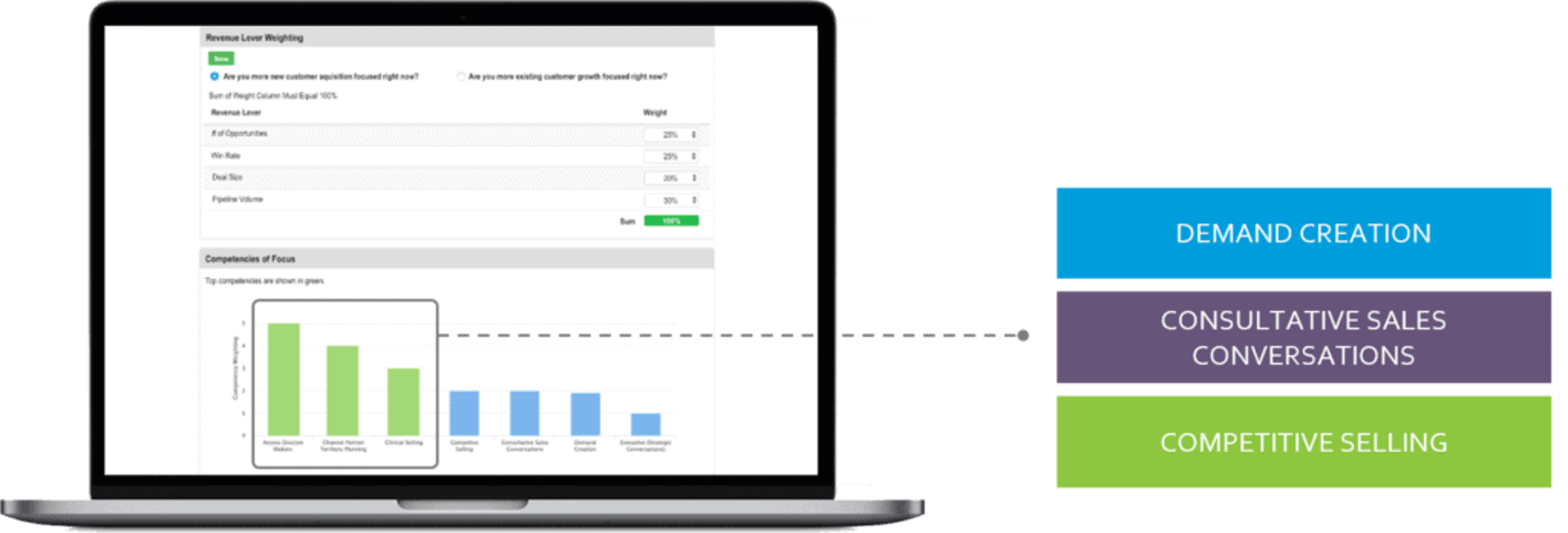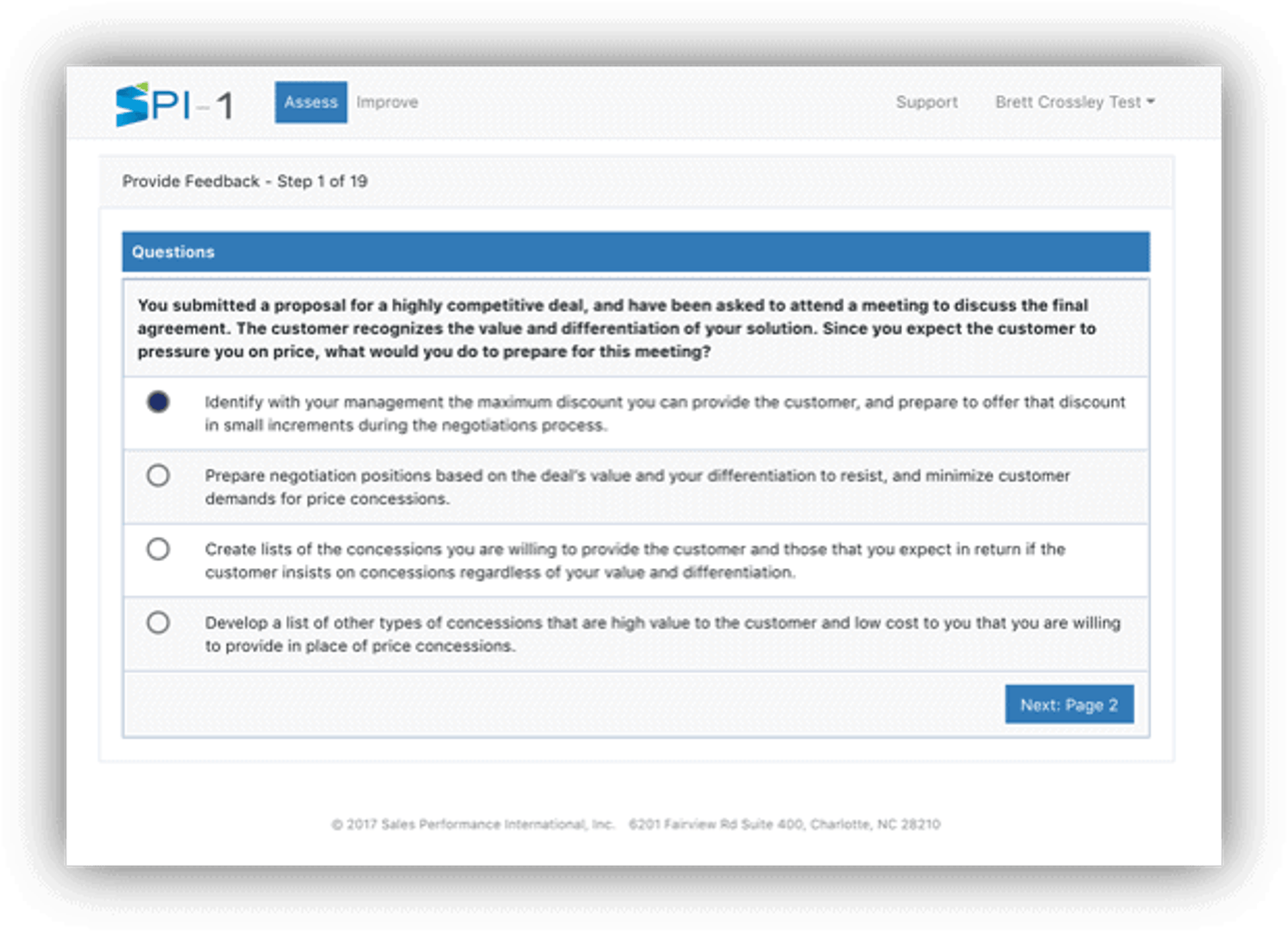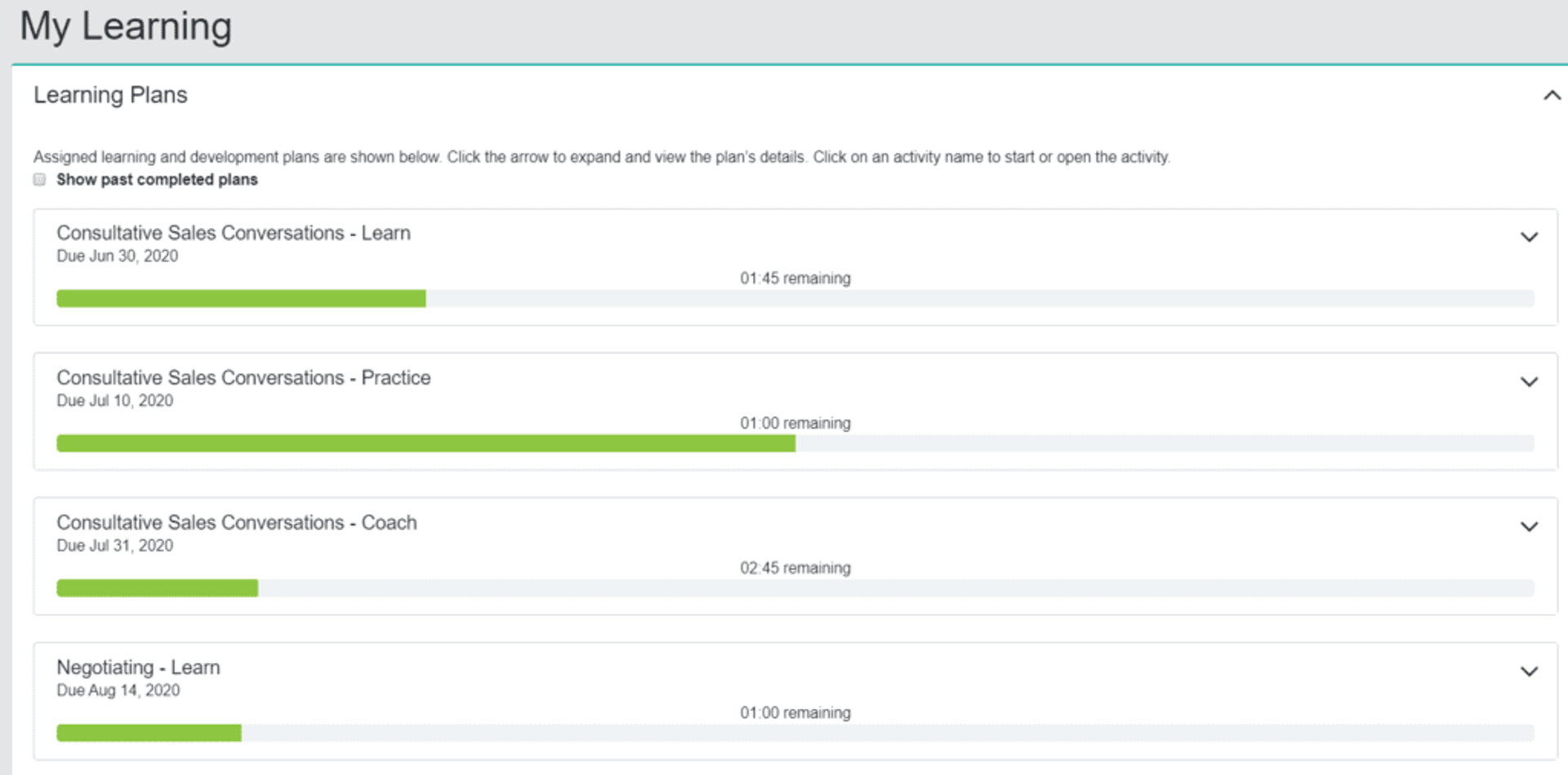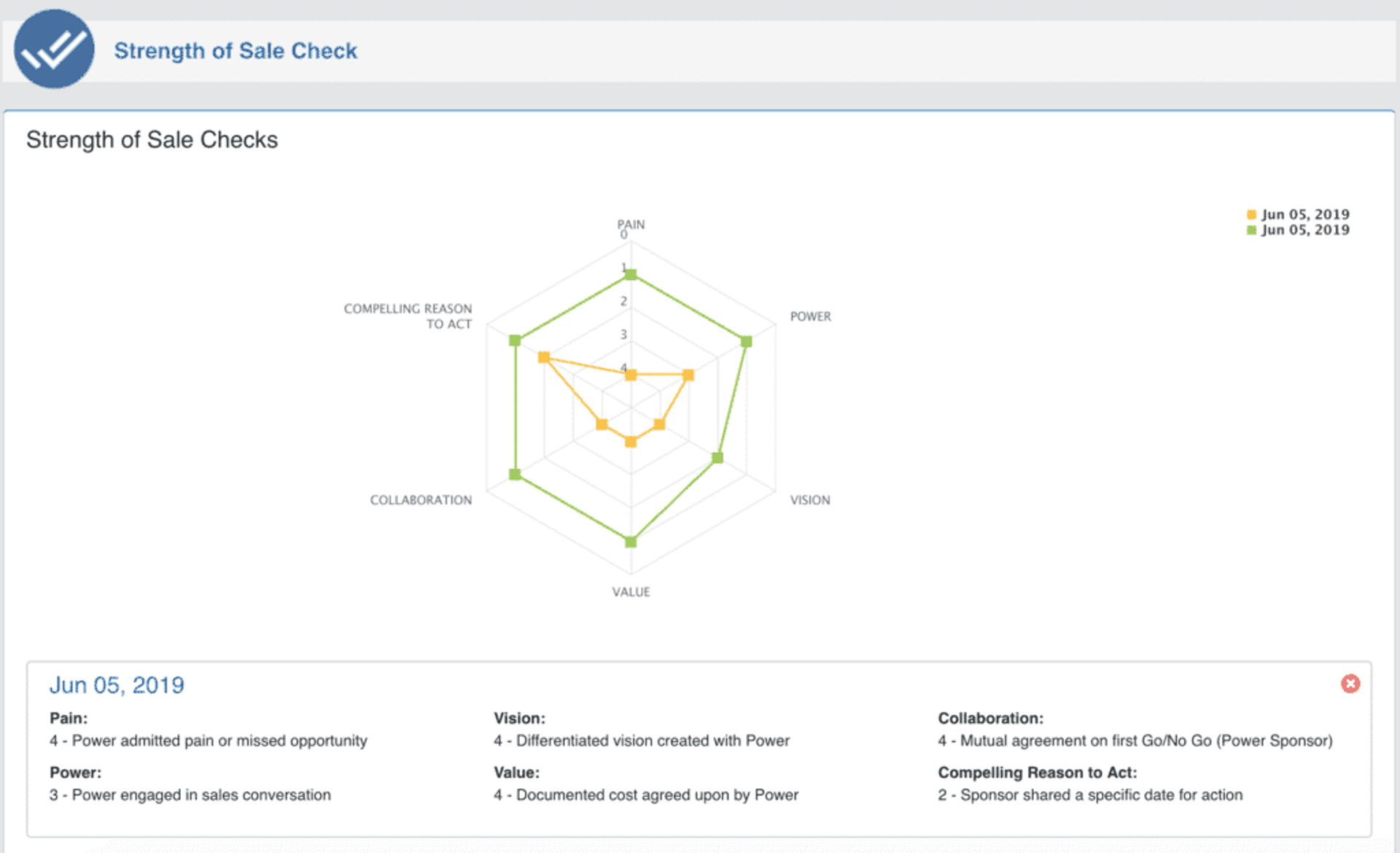5 Steps To Personalized Online Sales Training
Sales performance improvement

One of the most difficult challenges for companies around the world is to develop their sales talent in alignment with the business’s strategy in order to lead to measurably improved sales performance.
How do we know that investments in capability development are driving the right business outcomes? How can we ensure training will be personalized enough to effectively fill gaps for all sellers?
Conventional training takes a “one-size-fits-all” approach to sales training, typically ignoring the business’s strategy and the seller’s specific sales role and skill level.
This has become increasingly difficult in a world of more rapid product innovation, development of new markets, more frequent product launches, and shrinking product life cycles.
In the face of such change, to measurably improve sales performance requires online sales learning adapted to the needs of the business and the individual. This can be done in five steps:
- Map high-impact competencies to specific sales goals
- Assess the current state of sales talent for a more targeted approach to skill building
- Develop learning plans adapted to the needs of the business and the individual
- Perform ongoing application of learned techniques on real sales opportunities
- Analyze competency progress vs. sales goals
Map High-Impact Competencies to Sales Goals
“Disconnected from strategy, even good training can have a perverse effect […].” (Aligning Strategy and Sales, Frank Cespedes)
Frank Cespedes really seemed to be on to something. We have seen this time and time again over the years. Clients will attempt a blanket approach to sales training without really determining if the training is aligned with how the business plans to grow and evolve.
To make sure sales training drives the desired results, the first step is to map your sales strategy with the competencies that will have the greatest impact. There are four ways that companies achieve sales growth: market development, market penetration, diversification, and product development. Depending on your strategy, identify the competencies that have the most impact on your sales objectives and that you need to focus development on.
For example, as shown in the image below, our SPI-1 platform enables our clients to set up sales objectives based on a global sales strategy and then define the competencies the sales team needs to master to get the desired results.

Assess the Current State of Sales Talent for a More Targeted Approach to Skill Building
Just like a doctor cannot prescribe a cure without knowing the cause, sales organizations require a health check to really understand their strengths and weaknesses. Therefore, once the high-impact competencies are identified, the next step is to assess the current state of talent. Role-based competency models can provide you with an objective assessment of sales talent levels, which will enable you to detect where the most significant capability gaps exist. Based on these gaps, individualized learning plans can be created for each seller.
This is an example of a question asked in an assessment setup in our SPI-1 platform.

Develop Learning Plans Adapted to the needs of the Business and the Individual
Selling time has never been more valuable. Therefore, it is important not to waste time on learning content that individuals have already mastered. Every learner needs their own personalized path to mastery, which can be achieved thanks to competency-based development plans. Besides, using dynamic, real-time assessments ensures that the participants interact only with the developmental content they need. Dynamic assessments adapt their learning plans based on what the person already knows.
In sales organizations, effective learning and development is practiced in short Learn-Practice-Apply-Coach (LPAC) loops, focused around selected key development areas. Risk is radically reduced by tracking outcomes incrementally and changing course where needed.
This LPAC approach is the following:
- Learn: Consume topical, short mobile learning lessons
- Practice: Complete topical case study simulation assignments
- Apply: Demonstrate through real-world application assignments
- Coach: Provide and/or receive coaching reinforcement
Here is a part of a learning plan created in the SPI-1 platform, with specific modules for LPAC steps.

Perform Ongoing Application of Learned Techniques on Real Sales Opportunities
One of the biggest challenges to get a positive impact on sales results is successfully driving behavior change in the sales organization. To do that, salespeople need to apply what they have learned in real life. That’s why integrating sales tools in day-to-day salespeople’s lives is crucial to drive success.
For instance, in order to help sellers implement Solution Selling® methodology in real-life opportunities, Richardson Sales Performance has developed a few sales tools that are embedded in Salesforce, one of the best known CRM. These tools enable sellers to:
- Understand the key players of an account
- Prepare for a consultative sales conversation
- Confirm the sales conversation and gain agreement to move forward
- Create a collaborative plan with the buyer
- Objectively rate an opportunity and have a plan moving forward


Sales Performance Analytics
We offer a connected approach that makes sense of data from various sources and ties it to business outcomes – enabling managers to track progress in real-time and make adjustments that impact deals in flight.
Learn MoreAnalyze Competency Progress vs. Sales Goals
Data collection and analysis need to happen throughout the whole learning process in order to be able to measure progress and the impact on sales goals. If you have defined your specific goals in the first step and then assess your sales team before starting training, you should be able to compare this baseline with the figures collected when sellers start applying learning techniques in their own opportunities.
Here are two examples of how the SPI-1 platform enables our clients to track progress at several levels: competency development vs. metric(s) and sales tool usage vs. metric(s).
![]()

Connected Selling Curriculum™ Brochure
Explore our full curriculum of sales training content.
DownloadGet industry insights and stay up to date, subscribe to our newsletter.
Joining our community gives you access to weekly thought leadership to help guide your planning for a training initiative, inform your sales strategy, and most importantly, improve your team's performance.






